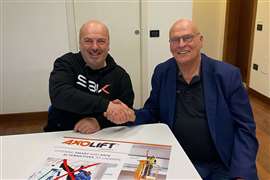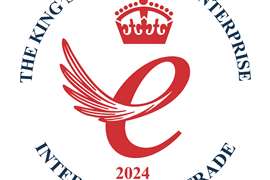Cross-border working
18 March 2008
.Economic ties between the United States and China increasingly capture headlines. Much of the recent publicity has been negative, resulting from US recalls of tyres, pet food, toys, medicine and more.
What has gone largely unnoticed in the press, however, is that over half of all US foreign investment in the first half of this decade went to Europe. From 2000 to 2005, US companies invested more than four times as much in the UK alone as they did in China and Hong Kong, while European companies accounted for 75% of all foreign investment in the United States.
With a gross domestic product of about 13 trillion euros (US$18 trillion), the European Union is the world's largest economy, compared with about US$11.5 trillion for the United States. The EU and US have the largest bilateral trade and investment relationship in world history, accounting for more than $1.5 trillion, according to the World Bank.
Together, they account for more than half of the global economy, while their bilateral trade accounts for 40% of the world total. Increasingly, the lines between US and EU companies are blurring. They have invested an estimated US$2 trillion in each other's economies, and employed as many as 14 million workers directly and indirectly in the process.
Both are huge markets. The 27 member nations of the EU have a population of nearly 400 million, and the US population should pass 303 million by the end of the year.
To ensure that their critically important economic relationship continues to thrive, the US and the EU established in 2002 the Positive Economic Agenda. Recognizing that regulatory differences, not tariffs, comprise the most significant remaining transatlantic trade barriers, President Bush and his EU counterparts welcomed the US-EU Regulatory Cooperation Roadmap in June 2005.
Under this ongoing, multi-year initiative, European and United States authorities aim to build effective mechanisms to promote better quality regulation, minimise unnecessary regulatory divergences to facilitate transatlantic trade and investment, and increase consumer confidence in the transatlantic market.
Despite these steps, companies in the specialized carrier and rigging industry often face considerable challenges when attempting to do business outside their own nation. At a time when it can be difficult to stay compliant with permits that vary from state to state and, increasingly, from municipality to municipality, venturing beyond US boundaries often presents seemingly insurmountable challenges.
Meanwhile, the EU continues to move in the direction of its goal of a single market but rules and regulations vary drastically between nations. While most new business-related legislation comes from the European Commission in Brussels, member nations retain considerable economic authority.
That is where SC&RA comes in. The association maintains its strongest presence in North America and Europe. At our Annual Conference and other major meetings, members from the US, Canada and Mexico meet members from many European nations. Both mutually rewarding personal and professional relationships grow from these meetings.
SC&RA helps keep these members in touch long after the meetings end. In many cases, the SC&RA Membership Directory has become an indispensable tool for members working to set up alliances within their own nation or internationally.
Through their directory, members can find information about more than 1,200 members. Of the 46 nations represented, 17 are in Europe.
SC&RA remains committed to building a larger, stronger international network. In April, for example, the association announced its support for an international crane and transport summit in the fall of 2009. This summit will be planned cooperatively by KHL, publisher of this magazine and American Cranes & Transport; the European Association of Heavy Haulage Transport and Mobile Cranes; SC&RA and a host of other worldwide associations that serve our industry.
Anticipated topics such as equipment harmonization and standardization, equipment regulations, and international labour markets should increase understanding among our industry's leaders in the US, EU and other parts of the world. We are convinced that this summit and its aftermath will greatly benefit our members, regardless of their location.






